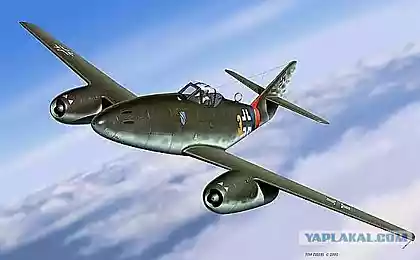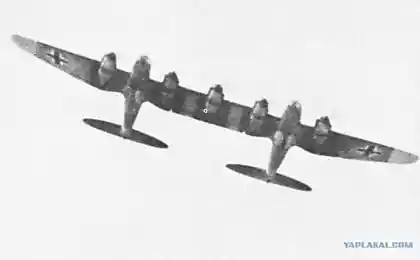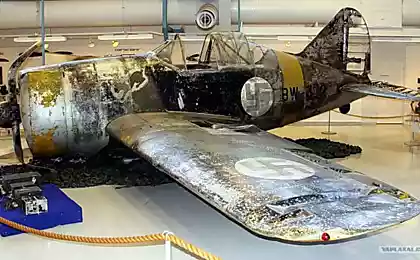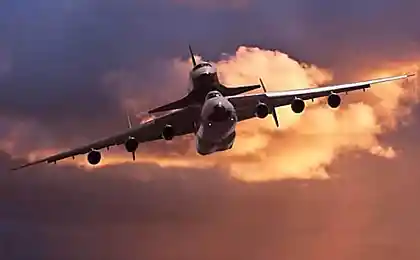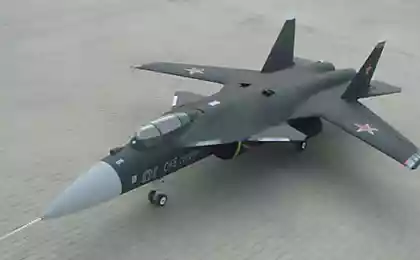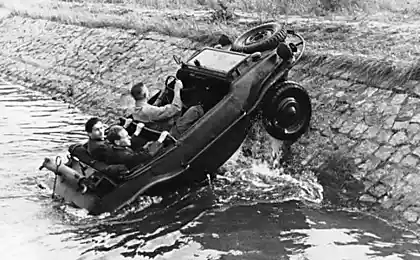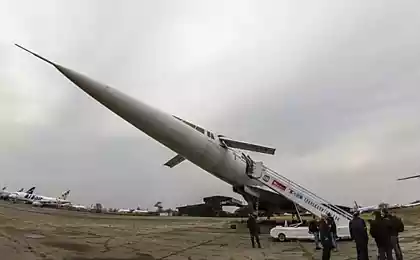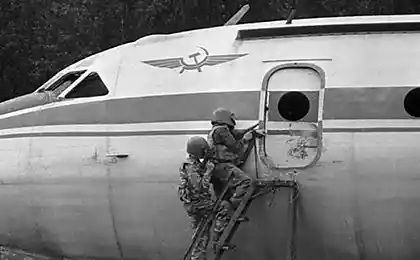2251
Amphibious aircraft Be-12 "Chaika". Little Known Facts
Little-known facts about the Soviet flying boat
October 18, 1960 the first flight of the amphibian Be-12. Nicknamed "The Seagull" antisubmarine aircraft had complex to detect and combat the enemy submarines. During the years of testing and operation of "The Seagull" has established nearly fifty world records.
via

The world's largest
With the advent of nuclear submarines there was a question of creating a special kind of air forces are responsible for search and destroy enemy submarines. First radiogidroakusticheskaya system appeared in 1953, two years later, she was put into service and used by seaplane Beriev Be-6. With it you can detect enemy submarine, next to a depth of 50 meters at a speed of not more than five knots. After the appearance of the Be-12 seaplane Beriev Be-6 were called transition to a new generation of machine capable of tackling a much more complex task.
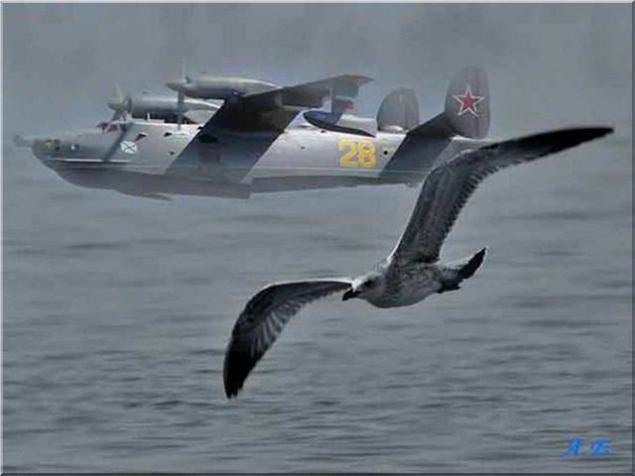
The new aircraft was bound to be an amphibian, and besides radiogidroakusticheskoy systems have antisubmarine torpedoes and depth charges. Undertook to develop such a machine in Beriev. The main difficulties arose when it became clear that running turboprops need auxiliary power unit. The first such installation developed in Zaporozhye (AI-8). By the time it became clear that the Zaporozhye and AI-20 engines are more reliable compared with the counting of the Kuibyshev similar NK-4F.
As a result, the Be-12 turned scheme similar to the Be-6, but the size significantly surpasses it. For its time, the Be-12 was the largest amphibious aircraft in the world. Soviet aircraft had not only excellent aerodynamic qualities, but was able to overcome a fairly high speed ocean waves, not burying his nose in the water.

Furthermore, unlike previous models seaplanes Be-12 had its own chassis, which allowed him to take off and land on land. And even independently from the land to enter into the water, and get out of the water to the shore.
Pretty delicate situation arose with the possibility of an emergency evacuation of the aircraft of different crew members. The pilots could safely eject, radio operator could leave amphibian through the door in the tail. And there also would have had to flee the navigator. Through the entire aircraft. To honor the military, this option does not accept them, they demanded equal conditions for crew members, it is possible to leave the plane from his workplace, that was reasonable from all positions. As a result, for the navigator came up with a special hatch in the bow of the aircraft.
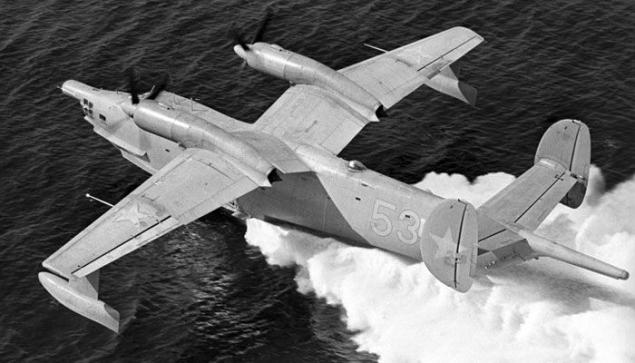
Human factor
First flight amphibian Be-2, held on 18 October 1960, revealed many shortcomings. Have modified the car for another three years. The first production model produced at the Taganrog plant №86. For ten years, was released 140 Be-12. The summer of 1961 showed the car at the traditional air show in Tushino. After this demonstration of the aircraft and stuck the name "Seagull».
November 24 of that year, the unexpected happened. The prototype aircraft crashed due to the fault of the crew. Played a role notorious human factor. "The Seagull" fell into the Sea of Azov. On the instructions of the pilots had to disable one of the two engines, and then turn it on. The situation is completely regular, these tasks are performed more than once. But then the commander instead to turn the engine stopped working Knocked second. Just clicked the wrong button.
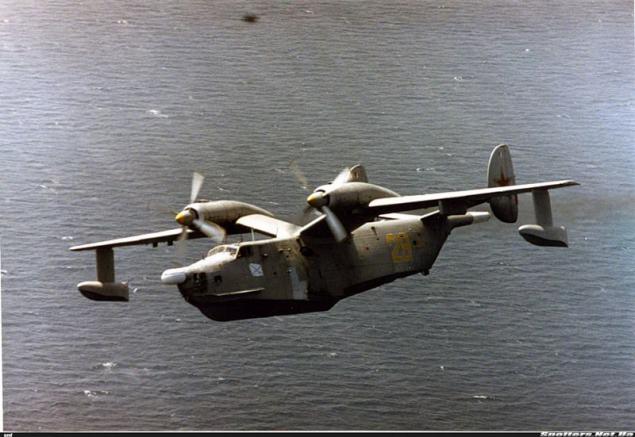
Pilots until recently tried to start the engine but do not have time. From collision with the water machine faults. Three died. Two escaped. Georgy Beriev personally went to the crash site, and then went to the hospital. As soon as he entered the room where lay the second pilot Pankin as he shouted:
- Georgy Mikhailovich, the machine is not being, it is our fault!
I must say that for the salvation Pankin had to show miracles of dexterity. Manhole cover he bouncers are already under water. Swim to the surface, he saw that survived and still Perebaylov radioman. Both picked seiners. Prior to joining the fishermen, pilots were holding wreckage. However, even in the depth of the crash site was small amphibians.
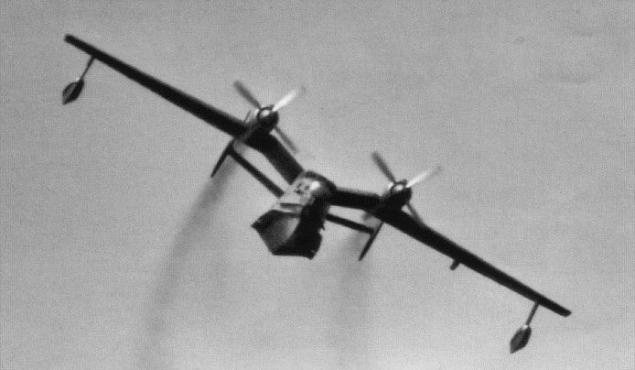
Testing continued until the following year, when it was built by the second plane. In the future, the Be-2 set dozens of world records (speed, load mass raised to a certain height, on climb, range, etc.)
On the basis of the Be-12 was also created aircraft rescue Be-12PS. For amphibian "Seagull" Beriev Design Bureau and a group of employees was awarded the State Prize of the USSR.
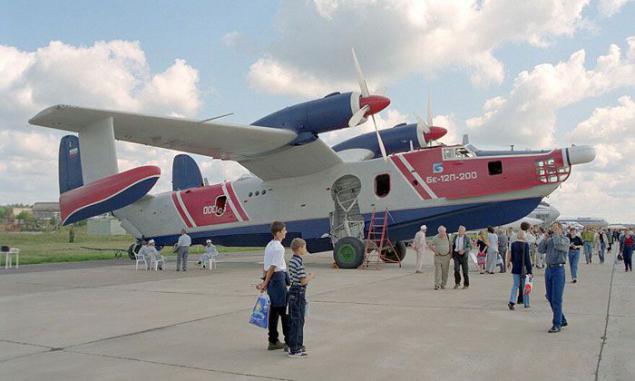
Specifications amphibious aircraft Be-12
Length 30 m 1
Wingspan 30 m 2
Aircraft height 7 m 4
Wing area of 99 square meters. m
Maximum speed - 610 km / h
Cruising speed - 473 km / h
Service ceiling 12,100 meters
Practical range - 4200 km
Engine Type - 2 HPT "Progress" AI-20D
Power - 2 x 5500 hp
Crew - 4 people
Armament
Combat load - 4000-5000 kg for 4 hardpoints and weapons bay
ASW 450 mm torpedo AT-1 or AT-2,
depth charges GB,
flares SAR.
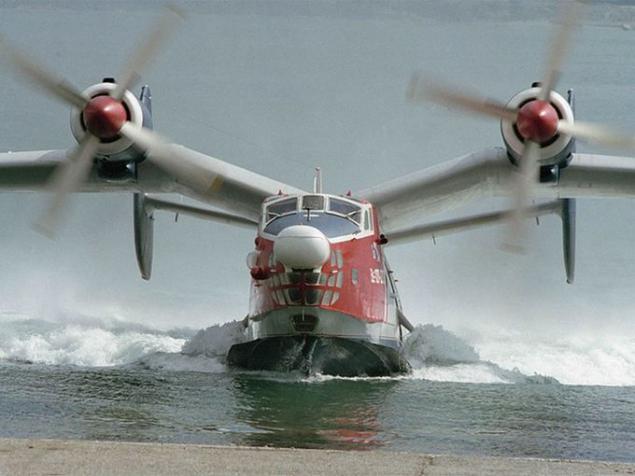
October 18, 1960 the first flight of the amphibian Be-12. Nicknamed "The Seagull" antisubmarine aircraft had complex to detect and combat the enemy submarines. During the years of testing and operation of "The Seagull" has established nearly fifty world records.
via

The world's largest
With the advent of nuclear submarines there was a question of creating a special kind of air forces are responsible for search and destroy enemy submarines. First radiogidroakusticheskaya system appeared in 1953, two years later, she was put into service and used by seaplane Beriev Be-6. With it you can detect enemy submarine, next to a depth of 50 meters at a speed of not more than five knots. After the appearance of the Be-12 seaplane Beriev Be-6 were called transition to a new generation of machine capable of tackling a much more complex task.

The new aircraft was bound to be an amphibian, and besides radiogidroakusticheskoy systems have antisubmarine torpedoes and depth charges. Undertook to develop such a machine in Beriev. The main difficulties arose when it became clear that running turboprops need auxiliary power unit. The first such installation developed in Zaporozhye (AI-8). By the time it became clear that the Zaporozhye and AI-20 engines are more reliable compared with the counting of the Kuibyshev similar NK-4F.
As a result, the Be-12 turned scheme similar to the Be-6, but the size significantly surpasses it. For its time, the Be-12 was the largest amphibious aircraft in the world. Soviet aircraft had not only excellent aerodynamic qualities, but was able to overcome a fairly high speed ocean waves, not burying his nose in the water.

Furthermore, unlike previous models seaplanes Be-12 had its own chassis, which allowed him to take off and land on land. And even independently from the land to enter into the water, and get out of the water to the shore.
Pretty delicate situation arose with the possibility of an emergency evacuation of the aircraft of different crew members. The pilots could safely eject, radio operator could leave amphibian through the door in the tail. And there also would have had to flee the navigator. Through the entire aircraft. To honor the military, this option does not accept them, they demanded equal conditions for crew members, it is possible to leave the plane from his workplace, that was reasonable from all positions. As a result, for the navigator came up with a special hatch in the bow of the aircraft.

Human factor
First flight amphibian Be-2, held on 18 October 1960, revealed many shortcomings. Have modified the car for another three years. The first production model produced at the Taganrog plant №86. For ten years, was released 140 Be-12. The summer of 1961 showed the car at the traditional air show in Tushino. After this demonstration of the aircraft and stuck the name "Seagull».
November 24 of that year, the unexpected happened. The prototype aircraft crashed due to the fault of the crew. Played a role notorious human factor. "The Seagull" fell into the Sea of Azov. On the instructions of the pilots had to disable one of the two engines, and then turn it on. The situation is completely regular, these tasks are performed more than once. But then the commander instead to turn the engine stopped working Knocked second. Just clicked the wrong button.

Pilots until recently tried to start the engine but do not have time. From collision with the water machine faults. Three died. Two escaped. Georgy Beriev personally went to the crash site, and then went to the hospital. As soon as he entered the room where lay the second pilot Pankin as he shouted:
- Georgy Mikhailovich, the machine is not being, it is our fault!
I must say that for the salvation Pankin had to show miracles of dexterity. Manhole cover he bouncers are already under water. Swim to the surface, he saw that survived and still Perebaylov radioman. Both picked seiners. Prior to joining the fishermen, pilots were holding wreckage. However, even in the depth of the crash site was small amphibians.

Testing continued until the following year, when it was built by the second plane. In the future, the Be-2 set dozens of world records (speed, load mass raised to a certain height, on climb, range, etc.)
On the basis of the Be-12 was also created aircraft rescue Be-12PS. For amphibian "Seagull" Beriev Design Bureau and a group of employees was awarded the State Prize of the USSR.

Specifications amphibious aircraft Be-12
Length 30 m 1
Wingspan 30 m 2
Aircraft height 7 m 4
Wing area of 99 square meters. m
Maximum speed - 610 km / h
Cruising speed - 473 km / h
Service ceiling 12,100 meters
Practical range - 4200 km
Engine Type - 2 HPT "Progress" AI-20D
Power - 2 x 5500 hp
Crew - 4 people
Armament
Combat load - 4000-5000 kg for 4 hardpoints and weapons bay
ASW 450 mm torpedo AT-1 or AT-2,
depth charges GB,
flares SAR.






